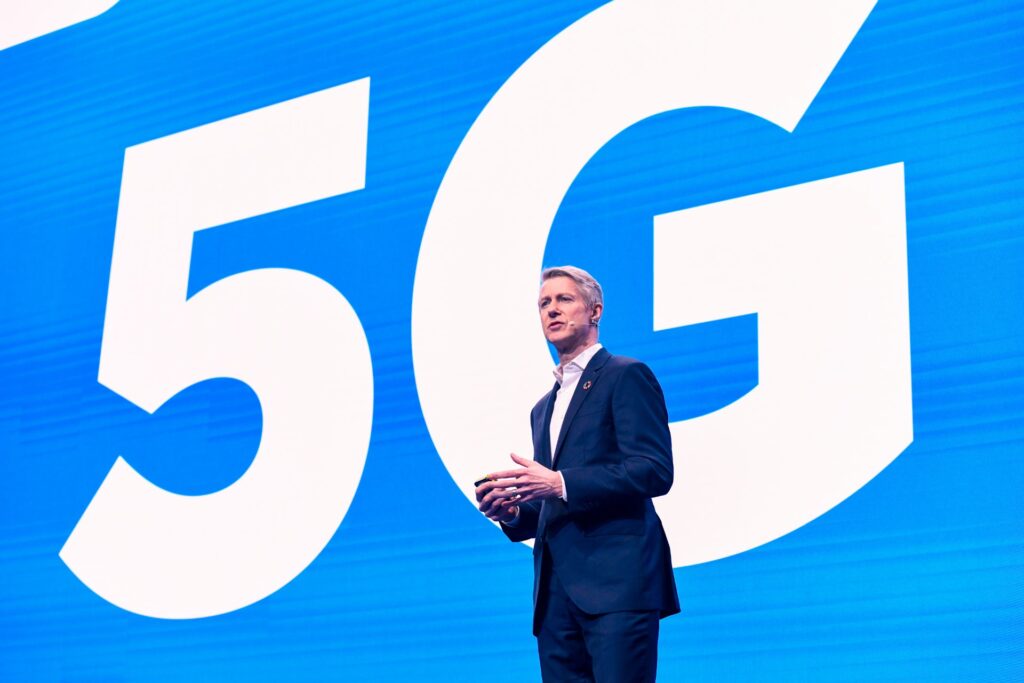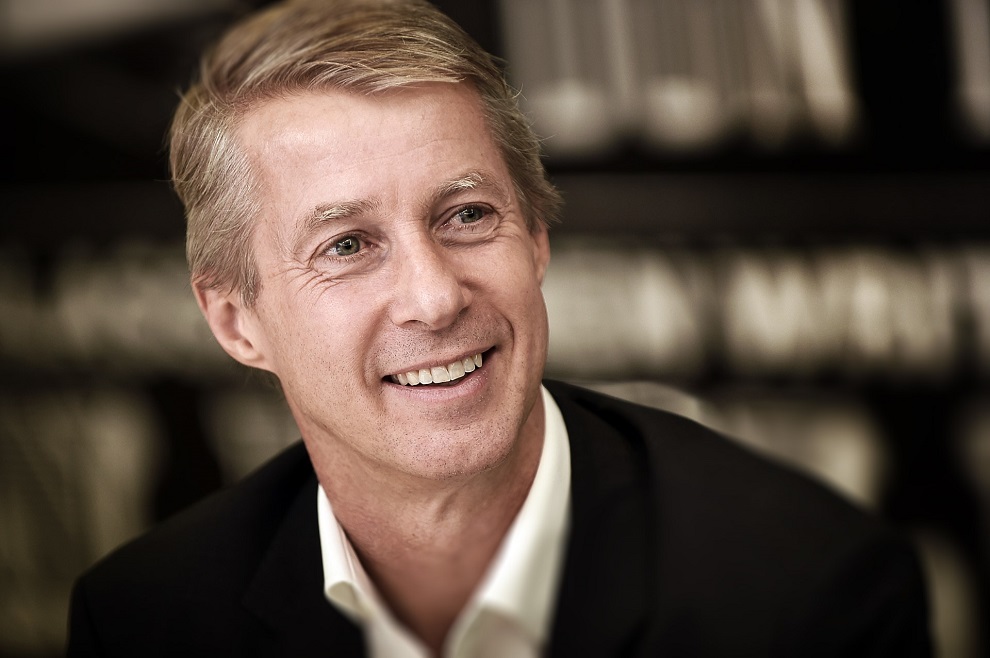Mats Granryd, Director General of the GSMA speaks with Teletimes International in an exclusive interview
Khalid Athar: How has the mobile industry evolved over the past two years, and what are the key trends and challenges it faces today?
Mats Granryd: Across the world, the big news is that 5G is taking off. Almost 300 operators in 100 markets have launched commercial 5G services and by 2030 we expect around 5.4 billion 5G connections. Of course, the GCC states are among the global leaders, with 5G networks covering 75% or more of the population in the region. That transition has taken place in just four years; a rate of progress I find incredible and is testament to the huge drive for innovation and connectivity in the region, which we saw at our M360 MENA event in Riyadh.
5G has so much to offer for consumers with lower latency and faster streaming, but even more in the B2B space. From automotive to aviation, manufacturing to financial services, the possibilities are endless.
In 2030, 5G will add about $60 billion to the GDP across the Middle East and North Africa, and globally it will add almost $1 trillion to the economy, as well as supporting and powering new technologies that can help solve some of the biggest global challenges, such as AI.
“The GCC states are among the global leaders, with 5G networks covering 75% or more of the population in the region.”
To take that as an example, already organisations are using AI to improve predictions, optimise operations, and personalise digital solutions. But across the world it is also becoming a vital tool for addressing natural disasters, tackling climate change and improving the quality of life for citizens.
In the next 5 years, over 150 million people, 3% of the global population, could be positively impacted by mobile Big Data and AI solutions. So there is much opportunity, and with that comes a big responsibility to ethically develop and use the technology for the benefit of people and the planet –indeed, the GSMA has been working with our members to develop an AI Ethics Playbook for the industry to address these crucial issues head-on as the technology develops.
As connectivity becomes even more embedded in our lives, new services and innovations like 5G Standalone, 5G new calling and 5G messaging will bring people and businesses closer together and unlock even more potential. And as an industry our next phase of growth will come from working across industries, including with hyperscalers and developers, creating a digital ecosystem that will benefit operators, industries and consumers everywhere.
At MWC Barcelona last year we launched GSMA Open Gateway to do just this. Open Gateway is a framework of common APIs that will bring universal access to operator networks allowing developers and cloud service providers to improve and build new digital services and accelerate the development of immersive technologies.
39 operator groups representing over 220 network operators have already joined Open Gateway…including du, e&, Omantel and stc from the region, so momentum is growing quickly, and this is just the beginning. Open Gateway is a complete paradigm shift in the way we have been doing things; one which I believe is going to have at least the same impact as GSM roaming standards when we introduced them 35 years ago, as long as we work together to bring the benefits of connectivity to all.
KA: Can you tell us a little bit about the theme for MWC 2024? What do you expect from the event in terms of attendance and the overall MWC experience?
MG: This year’s edition of MWC Barcelona will mark 18 years that we’ve been bringing our flagship event to the city of Barcelona. MWC 2024 is focused on the “Future First” vision, aiming to unite industries, continents, technologies, and communities to realise their future potential. The six main themes of the event include 5G and Beyond, Connecting Everything, Humanising AI, Manufacturing DX, Game Changers and Our Digital DNA.
Last year we had nearly 90,000 attendees and more than 2,400 exhibitors, and we’re on track to welcome similar numbers at this year’s MWC, ranging from industry giants to the dynamic startups at 4YFN.
We’ve made several exciting changes and additions to enhance the overall experience. These include a huge access tent on the South Access to ensure attendees can get into the venue as quickly as possible, a larger Keynote Stage with a capacity of 1,500 attendees, a double-deck DG Suite featuring the GSMA Booth and MWL Broadcast Stage, a Media Village in the East Access atrium area, a new feature area called MWC Hub in Hall 6, and multiple stages and theatres across the venue for conferences and partner activities.
MWC is a unifying force that emphasises how mobile technology transcends political, geographical, and cultural boundaries, and we cannot wait to kick off this gathering of the world’s most innovative and entrepreneurial minds.
KA: GSMA has been instrumental in promoting mobile connectivity in underserved areas. Can you share some successful initiatives or projects in this regard?
MG: Over 3 billion people are not using mobile internet despite living in areas with mobile broadband coverage. These people are in what we term the ‘usage gap’ and are held back from critical access to potentially life-changing education, health services, employment and economic opportunities, due to barriers such as device affordability, security concerns, a lack of relevant content in their own languages, and a lack of digital literacy and skills.
The GSMA is working with operators and policymakers to highlight these issues and close the usage gap through a number of initiatives, including our own ‘Breaking Barriers’ campaign, and our Connected Society and Connected Women programmes. Our member operators are also leading on advancing digital inclusion by further expanding mobile broadband networks and accelerating their adoption.
To date, there have been many examples of public and private sector collaborations on digital inclusion that have had a real impact on countless lives. For example:
· Connect Rwanda is a joint initiative between Rwanda’s Ministry of ICT and MTN Rwanda and was launched in December 2019 to boost smartphone penetration in the country, which is currently less than 20 per cent. The campaign aims to collect 1 million smartphones through donations and redistribute them to poor families, particularly in rural areas.
· In Sub-Saharan Africa, Orange is helping young people to build skills that employers demand via a range of initiatives, such as the Orange Digital Centers (ODCs), which bring together three complementary programs aimed at providing free and inclusive resources to support young people who lack the skills that employers demand.
Initiatives such as these can utterly transform communities and allow individuals to maximise their potential in an increasingly digital world.

KA: Mobile technology has a significant impact on various sectors, including healthcare and education. Can you discuss some of the ways GSMA is working to leverage mobile for social development?
MG: The GSMA’s Mobile for Development (M4D) programme is aligned with the United Nations’ Sustainable Development Goals (SDGs) and focuses on leveraging mobile technology for social development, particularly in areas such as healthcare and education.
One key objective of this work is to reduce inequalities by enhancing the accessibility of mobile technology for underserved populations. This includes efforts to provide affordable and reliable mobile services in remote or economically disadvantaged regions – crucial for enabling access to educational resources and healthcare services. M4D also addresses gender disparities in mobile technology access by promoting digital inclusion among women, ensuring they have equal access to educational and healthcare information and services.
KA: What is the role of GSMA in advocating for policies and regulations that promote innovation and growth in the mobile industry?
MG: The GSMA plays a vital role in advocating for policies that promote the advancement of mobile technology and growth of the industry worldwide, and we are continuously engaging governments, policymakers and regulatory authorities in support of our members.
We do this through direct engagement with policymakers around the globe, alongside our operator members, but also by using our convening power to bring these audiences together, to share best practice and collaborate on solutions to global challenges via our Ministerial Programme at MWC Barcelona and other GSMA events.
For example, at MWC Barcelona in 2023, the topic of the Investment Gap was top of the agenda, and we’ve been playing a significant role in advocating on this issue globally throughout the year. This topic became a major focus in Europe, where the European Union estimates that at least €174 billion in new investment will be required by 2030 to achieve connectivity targets. The telecoms sector is currently not strong enough to meet that demand, with many operators barely earning their cost of capital. To combat this, the industry requires a broader reset of the policy framework governing the digital communications ecosystem. This topic is now growing in prominence in other geographies too, such as in India, LATAM and Africa, where we recently supported the G6 mobile operators in issuing a joint communique calling for greater collaboration on reforms to taxation, spectrum policies and infrastructure funding mechanisms, ensuring that all beneficiaries from the digital ecosystem contribute to the cost of infrastructure investment.
KA: The mobile industry is continuously evolving, with technologies like 5G and IoT becoming increasingly important. How is GSMA involved in shaping the future of mobile technology, specially in relation to 5G and IoT?
MG: The global roll-out of 5G has been faster than that of any previous mobile generation, and the world is on track to reach 5bn 5G connections by the end of the decade.
“The global roll-out of 5G has been faster than that of any previous mobile generation, and the world is on track to reach 5bn 5G connections by the end of the decade.”
5G adoption has been largely driven by relatively mature markets, such as China, the US and developed APAC, but this trend is now changing – the launch of the technology in India in late 2022 heralded the second wave of 5G, and we saw over 30 markets across APAC and LATAM launch 5G networks in 2023.
Despite this, operators’ ability to launch the technology is hindered in certain markets by regulatory constraints and the usage gap. To this end, the GSMA actively advocates for governments to implement legislation aimed at reducing regulatory burdens for operators, creating favourable conditions that encourage investment in mobile infrastructure, and raising awareness of the benefits mobile internet presents to society. Our Open Gateway initiative, as I mentioned earlier, is also at the cutting edge of creating a new ecosystem which powers the development of digital services, enabled by 5G.
KA: How does GSMA foster collaboration and partnerships among mobile operators, manufacturers, and other stakeholders in the industry?
MG: We bring the whole industry together through various initiatives and platforms aimed at addressing shared challenges, promoting innovation, and driving sustainable development for all.
The GSMA is probably best known for its calendar of annual events – the MWC and M360 series – which convene global leaders in mobile and adjacent industries, as well as senior policymakers and regulatory authorities, aimed at advancing mobile technology and policy to tackle today’s biggest societal challenges.
For example, the GSMA Ministerial Programme – which will next take place at MWC Barcelona 2024 – is the world’s largest gathering of policymakers and industry leaders that enable the digital economy. The Programme provides a forum where ministers, heads of regulatory authorities and policymakers, and mobile industry CEOs and representatives of international organisations, can share knowledge and evolve policy and regulatory issues.
We are also proud to be working with industry players to help address some of the planet’s biggest issues. Through initiatives like the GSMA Innovation Fund for Humanitarian Challenges, aligned with the UN SDGS, we work with stakeholders to unlock investment for scalable technology innovations that can help address humanitarian challenges.
KA: Can you discuss GSMA’s efforts to promote sustainability and reduce the environmental impact of the mobile industry? Especially in relation to the growing energy consumption in data centers?
MG: The GSMA plays an important role in guiding the industry towards a more sustainable future, and we have been measuring progress in our annual SDG impact and Mobile Net Zero reports for many years. Climate Action remains a critical area of focus, with a dedicated team inside the GSMA, working alongside similar teams across our operator members to build concerted action and drive the industry towards Net Zero.
The mobile industry is taking collaborative action to be fully transparent about the industry’s own climate emissions and has developed an industry-wide climate action roadmap, to achieve net zero greenhouse gas emissions by 2050, in line with the Paris Agreement.
More than 50 operators – which together account for more than two-thirds of mobile connections globally – are now disclosing their climate impacts, energy, and greenhouse gas emissions via the internationally recognized CDP global disclosure system.
In addition, 29 operator groups – representing 30% of global mobile connections – have committed to setting science-based targets as a part of sector-specific decarbonization pathway that allows ICT companies to set targets in line with the latest climate science.
KA: As the Director General of GSMA, what do you see as the most significant challenges and opportunities for the mobile industry in the coming years, and how does GSMA plan to address them?
MG: The future is uncertain, but we do know that the telecoms industry faces a range of challenges and opportunities – driven by technology advancement, changing consumer behaviours, and an evolving regulatory landscape.
We are living in an age of new innovations. Technologies like AI, IoT, and edge computing are just some of the opportunities that I see opening new services and revenue streams. But they also pose challenges related to interoperability, standards development, and ethical considerations. We expect that in the coming years, as these emerging technologies become more sophisticated, we will have need to examine how they are integrated into services and solutions. At the GSMA, we will continue to engage with global stakeholder and regulators, and work to foster collaboration and knowledge sharing so that we can harness their transformational potential for the benefit of all.












